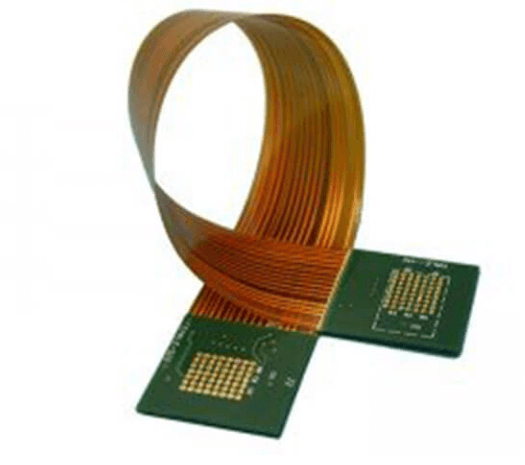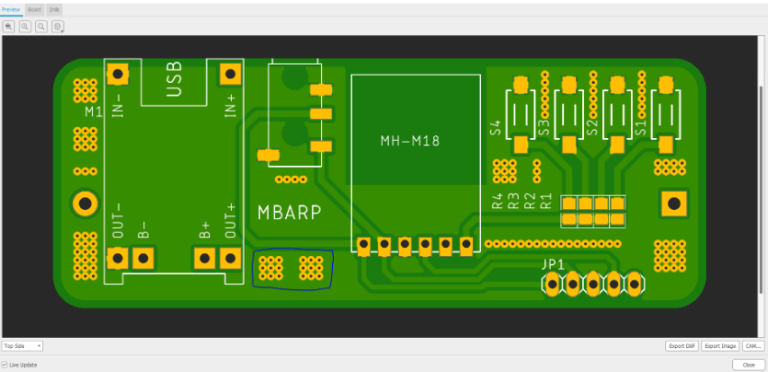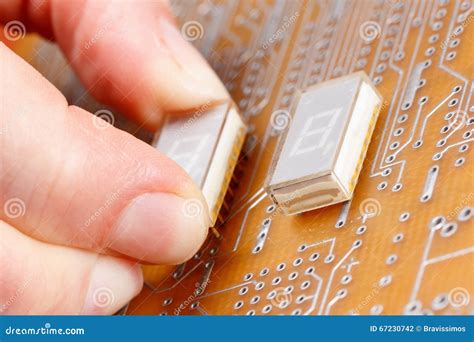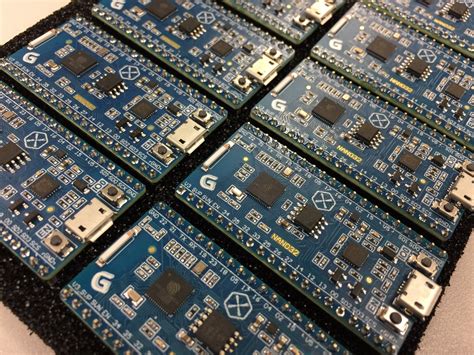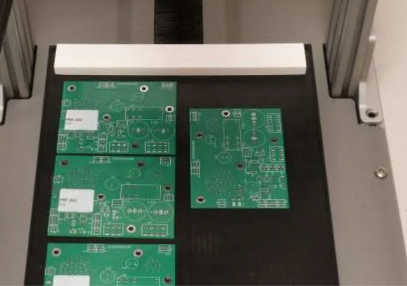Metal core pcb connectors
Advantages Of Metal Core PCB Construction In High-Performance Applications
Metal core printed circuit boards (PCBs) have emerged as a pivotal innovation in the realm of high-performance applications, offering a multitude of advantages that make them indispensable in various industries. These PCBs are distinguished by their unique construction, which incorporates a metal core, typically aluminum or copper, as opposed to the traditional fiberglass substrate. This fundamental difference in construction endows metal core PCBs with a range of benefits that are particularly advantageous in demanding environments.
One of the most significant advantages of metal core PCB construction is its superior thermal management capabilities.
In high-performance applications, electronic components often generate substantial amounts of heat, which can lead to performance degradation or even failure if not properly managed. The metal core in these PCBs acts as an excellent heat conductor, efficiently dissipating heat away from critical components. This enhanced thermal conductivity ensures that the components operate within their optimal temperature range, thereby improving reliability and extending the lifespan of the device.
In addition to thermal management, metal core PCBs offer enhanced mechanical stability.
The metal core provides a robust foundation that reduces the risk of warping or bending, which is particularly beneficial in applications subject to mechanical stress or vibration. This stability is crucial in industries such as automotive and aerospace, where electronic systems must withstand harsh conditions without compromising performance. Furthermore, the rigidity of metal core PCBs allows for more precise and reliable assembly processes, contributing to the overall quality and durability of the final product.
Another noteworthy advantage is the potential for size and weight reduction.
By efficiently managing heat, metal core PCBs can support higher power densities, allowing for more compact designs. This is particularly advantageous in applications where space is at a premium, such as in portable electronic devices or compact lighting solutions. The ability to reduce the size and weight of electronic assemblies without sacrificing performance is a key factor driving the adoption of metal core PCBs in various high-performance sectors.
Moreover, metal core PCBs exhibit excellent electromagnetic interference (EMI) shielding properties.
The metal core acts as a natural barrier to electromagnetic fields, reducing the risk of interference with other electronic components. This is especially important in applications where signal integrity is critical, such as in telecommunications and high-frequency circuits. By minimizing EMI, metal core PCBs contribute to the overall reliability and performance of electronic systems.
Transitioning to the economic aspect, while the initial cost of metal core PCBs may be higher compared to traditional PCBs, their long-term benefits often outweigh the upfront investment.
The improved thermal management and mechanical stability can lead to reduced maintenance costs and fewer failures, resulting in lower total cost of ownership. Additionally, the ability to design more compact and efficient systems can lead to cost savings in materials and manufacturing processes.
In conclusion, the advantages of metal core PCB construction in high-performance applications are manifold. From superior thermal management and mechanical stability to size reduction and EMI shielding, these PCBs offer a comprehensive solution to the challenges faced in demanding environments. As industries continue to push the boundaries of technology, the role of metal core PCBs in ensuring reliability, efficiency, and performance will undoubtedly become increasingly significant.

Key Materials Used In Metal Core PCB Construction
Metal core printed circuit boards (PCBs) are a specialized type of PCB designed to efficiently dissipate heat, making them ideal for high-power applications. The construction of metal core PCBs involves the use of specific materials that enhance their thermal management capabilities. Understanding these key materials is crucial for appreciating the unique properties and advantages of metal core PCBs.
At the heart of metal core PCB construction is the metal substrate, which serves as the foundation of the board.
Typically, aluminum is the most commonly used metal due to its excellent thermal conductivity, lightweight nature, and cost-effectiveness. Aluminum substrates provide a robust base that effectively transfers heat away from critical components, thereby enhancing the overall reliability and performance of the PCB. In some cases, copper or steel may be used as alternative substrates, each offering distinct advantages. Copper, for instance, provides superior thermal conductivity compared to aluminum, making it suitable for applications requiring even more efficient heat dissipation. However, its higher cost and weight can be limiting factors. Steel, on the other hand, offers mechanical strength and durability, though it is less effective in thermal management compared to aluminum and copper.
In addition to the metal substrate, the dielectric layer is another essential component in metal core PCB construction.
This layer serves as an insulating barrier between the metal core and the conductive copper circuitry. The dielectric material must possess high thermal conductivity to facilitate efficient heat transfer while maintaining electrical insulation. Commonly used dielectric materials include epoxy resins and ceramic-filled polymers. These materials are engineered to provide a balance between thermal performance and electrical insulation, ensuring that the PCB can operate safely and effectively under high thermal loads.
The copper circuitry layer is another critical material in metal core PCBs. This layer is responsible for conducting electrical signals across the board.
The copper is typically laminated onto the dielectric layer and etched to form the desired circuit patterns. The thickness of the copper layer can vary depending on the specific requirements of the application, with thicker copper layers being used for higher current-carrying capacity. The choice of copper thickness is a crucial consideration in the design of metal core PCBs, as it directly impacts the board’s electrical performance and thermal management capabilities.
Furthermore, the solder mask is an important material used in metal core PCB construction.
This protective layer is applied over the copper circuitry to prevent oxidation and short circuits. The solder mask also provides a degree of mechanical protection, safeguarding the delicate copper traces from physical damage. In metal core PCBs, the solder mask must be carefully selected to withstand the higher temperatures associated with these boards, ensuring long-term reliability and performance.
In conclusion, the construction of metal core PCBs involves a careful selection of materials, each playing a vital role in the board’s thermal management and electrical performance. The metal substrate, dielectric layer, copper circuitry, and solder mask all contribute to the unique properties that make metal core PCBs an ideal choice for high-power applications. By understanding the key materials used in their construction, one can better appreciate the advantages and applications of metal core PCBs in modern electronics.
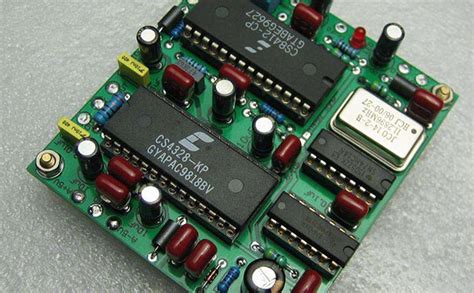
Thermal Management Techniques In Metal Core PCB Design
In the realm of electronic design, thermal management is a critical consideration, particularly in applications where high power and heat dissipation are prevalent. Metal Core Printed Circuit Boards (MCPCBs) have emerged as a pivotal solution in addressing these thermal challenges. The construction of MCPCBs is specifically tailored to enhance heat dissipation, thereby improving the performance and reliability of electronic devices. Understanding the thermal management techniques employed in metal core PCB design is essential for engineers and designers aiming to optimize their electronic systems.
At the heart of MCPCB construction is the metal core itself, typically composed of aluminum or copper.
This core serves as a heat spreader, efficiently conducting heat away from critical components. The choice of metal is crucial, as it directly influences the thermal conductivity of the PCB. Aluminum, for instance, is favored for its lightweight properties and cost-effectiveness, while copper offers superior thermal conductivity, albeit at a higher cost. The selection between these materials often depends on the specific thermal requirements and budget constraints of the project.
In addition to the metal core, the dielectric layer plays a significant role in thermal management.
This layer, situated between the metal core and the copper circuitry, must possess excellent thermal conductivity to facilitate efficient heat transfer. Advanced dielectric materials are often employed to achieve this, ensuring minimal thermal resistance and enhancing the overall thermal performance of the PCB. The thickness of the dielectric layer is another critical factor; a thinner layer generally results in better thermal conductivity, although it must be balanced with electrical insulation requirements.
Furthermore, the design of the copper circuitry itself can significantly impact thermal management.
By optimizing the layout of the copper traces, designers can minimize thermal hotspots and ensure even heat distribution across the PCB. Wider traces and larger copper areas are often utilized to reduce thermal resistance and improve heat dissipation. Additionally, the strategic placement of thermal vias, which are conductive pathways that connect the copper layers to the metal core, can further enhance heat transfer. These vias act as conduits for heat, channeling it away from heat-sensitive components and towards the metal core.
Another technique employed in MCPCB design is the use of thermal interface materials (TIMs).
These materials are applied between the heat-generating components and the metal core to improve thermal contact and reduce interface resistance. TIMs, such as thermal pads or pastes, fill microscopic air gaps that can impede heat transfer, thereby optimizing the thermal pathway. The selection of an appropriate TIM is crucial, as it must provide both excellent thermal conductivity and mechanical stability.
Moreover, the overall design and assembly of the MCPCB can influence its thermal performance.
For instance, the use of surface-mount technology (SMT) can reduce the thermal path length, thereby enhancing heat dissipation. Additionally, the integration of heat sinks or heat spreaders on the PCB surface can further augment thermal management, particularly in high-power applications.
In conclusion, the construction of metal core PCBs is intricately linked to effective thermal management techniques. By carefully selecting materials, optimizing circuit design, and employing advanced thermal interface solutions, designers can significantly enhance the thermal performance of their electronic systems. As electronic devices continue to demand higher power and performance, the role of MCPCBs in thermal management will undoubtedly become increasingly vital, ensuring the reliability and longevity of cutting-edge technologies.

Comparing Metal Core PCB Construction To Traditional PCB Methods
Metal core printed circuit boards (PCBs) have emerged as a significant innovation in the electronics industry, offering distinct advantages over traditional PCB methods. To understand the differences between these two approaches, it is essential to explore the construction processes, material choices, and performance characteristics that set them apart.
Traditional PCBs are typically constructed using a fiberglass substrate, known as FR-4, which provides a balance of strength, flexibility, and cost-effectiveness.
This substrate is layered with copper to form the conductive pathways necessary for electronic circuits. The process involves etching the copper to create the desired circuit patterns, followed by drilling holes for component placement and applying a solder mask to protect the circuitry. While this method has been the industry standard for decades, it presents limitations in thermal management and mechanical stability, particularly in high-power applications.
In contrast, metal core PCBs incorporate a metal substrate, usually aluminum or copper, which serves as the base layer.
This metal core is then laminated with a dielectric layer and a copper circuit layer. The primary advantage of using a metal core is its superior thermal conductivity, which allows for more efficient heat dissipation. This characteristic is particularly beneficial in applications where heat generation is a concern, such as LED lighting, power converters, and automotive electronics. By effectively managing heat, metal core PCBs can enhance the reliability and longevity of electronic components.
Moreover, the mechanical properties of metal core PCBs offer additional benefits.
The metal substrate provides increased rigidity and strength, reducing the risk of warping or damage during manufacturing and operation. This robustness is advantageous in environments subject to mechanical stress or vibration, where traditional PCBs might falter. Furthermore, the metal core can act as an electromagnetic shield, reducing interference and improving signal integrity, which is crucial in high-frequency applications.
Despite these advantages, metal core PCBs are not without their challenges.
The construction process is more complex and costly compared to traditional methods. The metal substrate requires specialized equipment and techniques for drilling and routing, which can increase production time and expense. Additionally, the choice of dielectric material is critical, as it must provide adequate electrical insulation while maintaining thermal conductivity. These factors can limit the widespread adoption of metal core PCBs, particularly in cost-sensitive applications.
Nevertheless, the growing demand for high-performance electronic devices continues to drive interest in metal core PCB technology.
As industries seek solutions to manage heat and improve reliability, the benefits of metal core construction become increasingly attractive. Advances in materials science and manufacturing techniques are likely to reduce costs and expand the range of applications for metal core PCBs in the future.
In conclusion, while traditional PCB methods remain prevalent due to their cost-effectiveness and simplicity, metal core PCBs offer compelling advantages in thermal management, mechanical stability, and electromagnetic performance. The choice between these two construction methods ultimately depends on the specific requirements of the application, balancing factors such as cost, performance, and environmental conditions. As technology evolves, the role of metal core PCBs is poised to grow, providing innovative solutions to the challenges faced by modern electronics.


